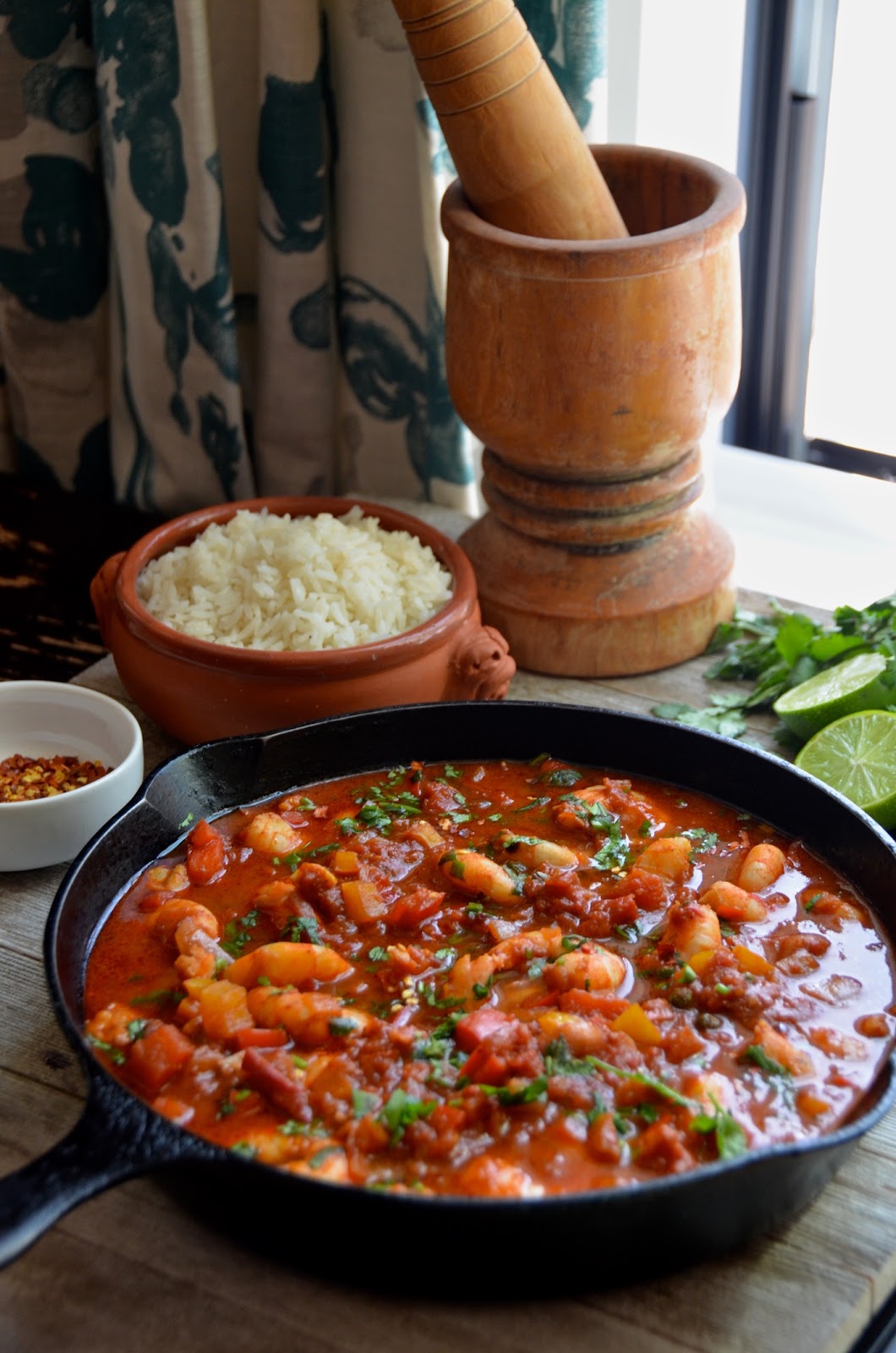I started cooking as a young teen, but the first dishes I made were always the ones I couldn’t get easily at home. Dishes like lasagna, souvlaki, and traditional American pastries were more exciting to me than what my mom made.
It wasn’t until I went away to college in a different city that I found myself suddenly craving those flavors I’d grown up eating. Essentially it wasn’t until I was away from home that I finally made it back to my mother’s kitchen. Through my mom’s emailed recipes, and phone calls made while standing in the middle of the aisle at the grocery store, I was able to start recreating these flavors in my tiny college dorm room kitchen. And that was when I realized the power that food has to help us connect with and experience our history and culture no matter where we are in the world.
For me, it started with Camarones Enchilados—a Puerto Rican dish of shrimp cooked in a spicy tomato sauce with peppers, onions, and plenty of garlic. This is a dish that I always loved, but especially because of the way it connected me to my mom.
Due to our proximity to Mexico, people in the US tend to think of all Latin food as spicy, but the cuisine of the Latin Caribbean islands like Puerto Rico, Cuba, and the Dominican Republic is actually not spicy. In fact, these Camarones Enchilados (which translates roughly to “Deviled Shrimp” and which should definitely not be confused with Mexican enchiladas, which are a totally different thing!) are one of the very few Puerto Rican dishes with any heat.
It’s that heat that made this dish special for my mom and me, because unlike my dad (and most Puerto Ricans!) we both really love spice. So this dish is one that she usually made just for the two of us to enjoy on the days when my dad was on a business trip or working through the weekend.
It is also one of the first dishes I asked her to teach me how to make. I still remember the first time I did. I was about 20 or 21, and I kept her on the phone as I walked around the grocery store gathering ingredients, then later on again as I worked through the steps in my kitchen.
It came out perfectly the first time (and ever since then!) and I remember marveling at the way just a few minutes of simmering spices and tomatoes together could suddenly surround me with the warmth and love of my mother.
Camarones Enchilados Recipe (Puerto Rican Shrimp Creole)
Serves 4
Ingredients
Olive oil
1 yellow onion, diced
2 red bell peppers, diced
3 large cloves garlic, minced
1 tablespoon Smoked Spanish paprika
2 teaspoons ground cumin
1/2 teaspoon crushed red pepper
kosher salt
1/2 cup dry red wine
2 tablespoons capers
1 28oz can crushed tomatoes
3 large bay leaves
2 pounds medium shrimp, peeled and deveined
1 tablespoon fresh lime juice, plus more for serving
3/4 cup chopped fresh cilantro, plus more for garnish
Cooked white rice, for serving.
Directions
Heat a few tablespoons of olive oil in heavy-bottomed saucepan or Dutch oven over medium-high heat. Add the onion and bell pepper, and cook, stirring occasionally until they start to soften (about 5 minutes). Add the garlic, paprika, cumin, red pepper, and a generous pinch of kosher salt, and cook until fragrant, about 1 to 2 minutes.
Add the wine, capers, and tomatoes, and bay leaves, and bring to a boil. Reduce heat and simmer, stirring occasionally until the liquid is slightly thickened (about 15 - 20 minutes).
Stir in the shrimp and cook until opaque, about 3 to five minutes.
Remove from heat, stir in the lime juice and fresh cilantro, remove the bay leaves, and serve with white rice.







No comments
Hi there and thank you for reading! This blog is not currently active, so new questions are not being monitored. Please enjoy the archives.
Note: Only a member of this blog may post a comment.